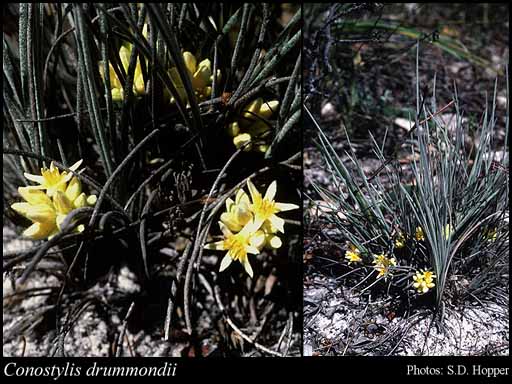- Reference
- Fl.Austral. 6:433 (1873)
- Conservation Code
-
Threatened
A taxon name retains its ‘Threatened’ status until a new name has been officially endorsed and appears in the Gazettal Notice.
- Naturalised Status
- Native to Western Australia
- Name Status
- Current
Rhizomatous, tufted perennial, grass-like or herb, 0.1-0.3 m high. Fl. yellow, Oct to Nov. White, grey or yellow sand, gravel.

Scientific Description
Leaves round (leaves terete), 90-210 mm long, 0.8-1.2 mm wide; bristles or hairs on the leaf margin absent; hairs on the surface of the leaf present. Scape present, hairy, 55-70 mm long. Inflorescence subtended by a bract 12-18 mm long, with several flowers; floral bracts 5-7 mm long; pedicels present, 1-2 mm long; flowers 8-12 mm long. Perianth hairy, radially symmetrical, uniformly coloured, yellow, with six more or less equal tepals, the inner segments 4-6 mm long. Stamens six, in two levels alternating; filaments 1.8-2.2 mm long; anther 2-2.5 mm long, without an appendage. Style 6-8 mm long. Flowers in October or November. Occurs in the Avon Wheatbelt, Jarrah Forest and Mallee IBRA bioregion(s), of the South-west Botanical Province. Conservation Code Threatened (T).
Distribution
- IBRA Regions
- Avon Wheatbelt, Jarrah Forest, Mallee.
- IBRA Subregions
- Katanning, Northern Jarrah Forest, Southern Jarrah Forest, Western Mallee.
- Local Government Areas (LGAs)
- Kojonup, Lake Grace, Narrogin, Wagin, West Arthur.